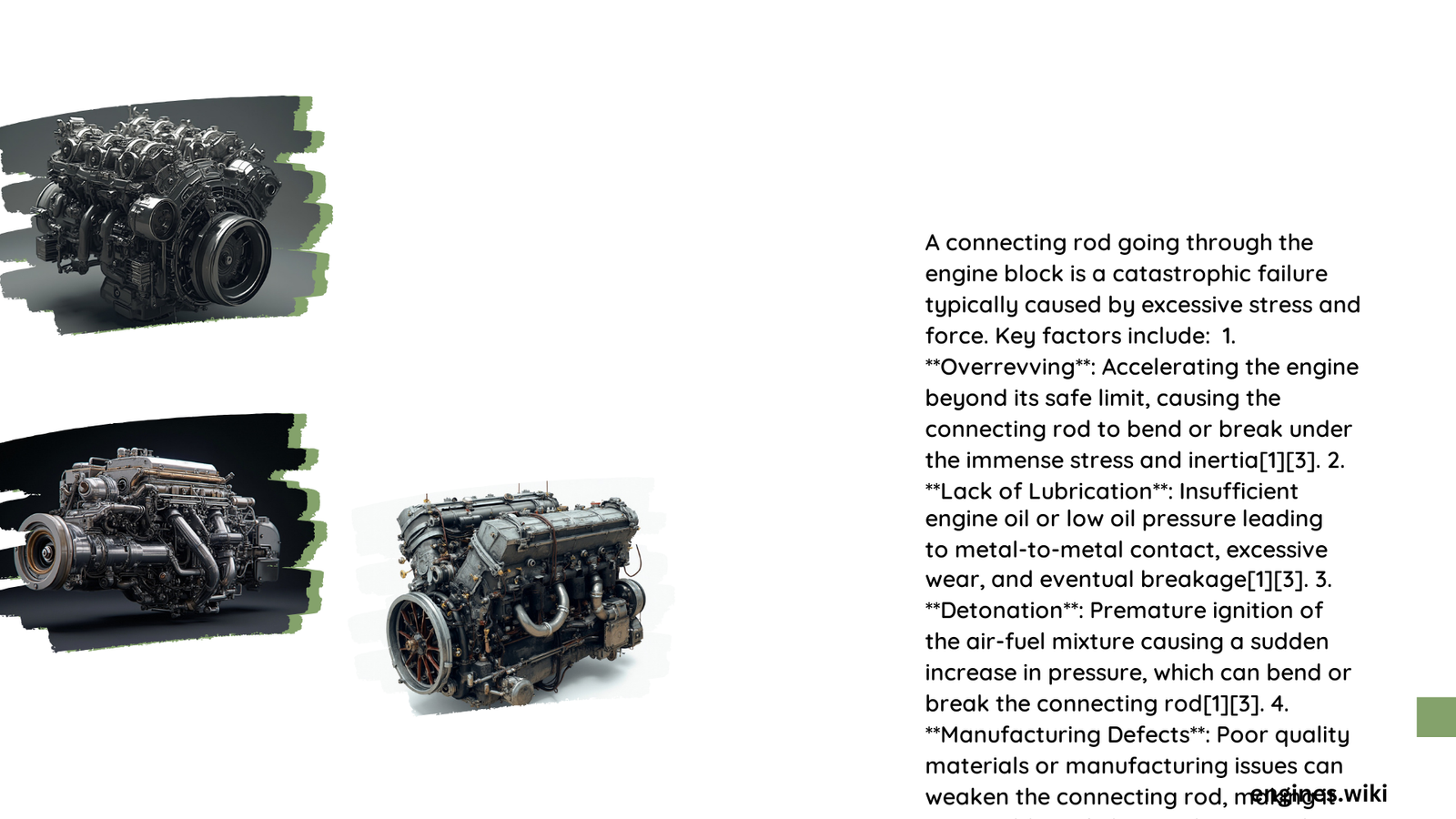When a connecting rod catastrophically fails and penetrates the engine block, it represents one of the most severe mechanical failures a vehicle can experience. This devastating event occurs when extreme internal engine stress causes the connecting rod to break through the engine block’s metal wall, instantly destroying engine functionality and potentially causing irreparable damage to the entire powertrain system.
What Causes Connecting Rod to Penetrate Engine Block?
Root Causes of Catastrophic Failure
A connecting rod can penetrate the engine block due to several critical factors:
- Excessive Engine Stress
- Prolonged high-RPM operation
- Lack of proper lubrication
- Manufacturing defects
-
Extreme temperature variations
-
Material Fatigue
- Repeated mechanical stress
- Metal crystallization
- Microscopic structural weaknesses
Immediate Symptoms of Rod Failure
| Symptom | Severity | Immediate Action |
|---|---|---|
| Loud Metallic Knocking | High | Stop Engine Immediately |
| Violent Engine Vibration | Critical | Cease Vehicle Operation |
| Sudden Power Loss | Extreme | Pull Over Safely |
How Severe is the Engine Damage?

When a connecting rod penetrates the engine block, the damage is typically catastrophic and irreversible. The metal rod forcefully breaks through the engine’s structural wall, creating:
- Massive internal mechanical destruction
- Complete engine block structural compromise
- Potential complete engine replacement requirement
Diagnostic Indicators
Mechanics will observe:
– Visible hole in engine block
– Significant metal fragmentation
– Oil and coolant system contamination
– Potential crankshaft and piston damage
What Are Repair Options?
Repairing an engine after a connecting rod penetrates the block is rarely feasible. Most scenarios require:
- Full Engine Replacement
- Complete powertrain removal
- Installation of remanufactured or new engine
-
Comprehensive system inspection
-
Cost Considerations
- Estimated repair costs: $4,000 – $9,000
- Potential total vehicle write-off
- Insurance claim likelihood
Prevention Strategies
To minimize connecting rod failure risk:
- Maintain regular oil changes
- Use high-quality engine lubricants
- Monitor engine performance indicators
- Address unusual engine noises promptly
- Follow manufacturer’s maintenance schedule
Technical Specifications
Connecting Rod Specifications:
– Typical Clearance: 0.001 – 0.003 inches
– Recommended Torque: 20-40 Nm
– Material: Forged Steel/Aluminum Alloy
Expert Recommendations
Professional mechanics unanimously agree that a connecting rod penetrating the engine block represents a terminal failure. Immediate professional assessment is crucial to determine the extent of damage and potential repair options.
Conclusion
A connecting rod went through engine block is not just a mechanical failure—it’s a complete system breakdown requiring comprehensive professional intervention. Understanding the symptoms, causes, and potential consequences can help vehicle owners recognize warning signs and take preventative measures.
Reference:
1. CarParts.com – Rod Bearings Explained
2. Automotive Mechanics Journal
3. Engine Failure Diagnostic Guide
